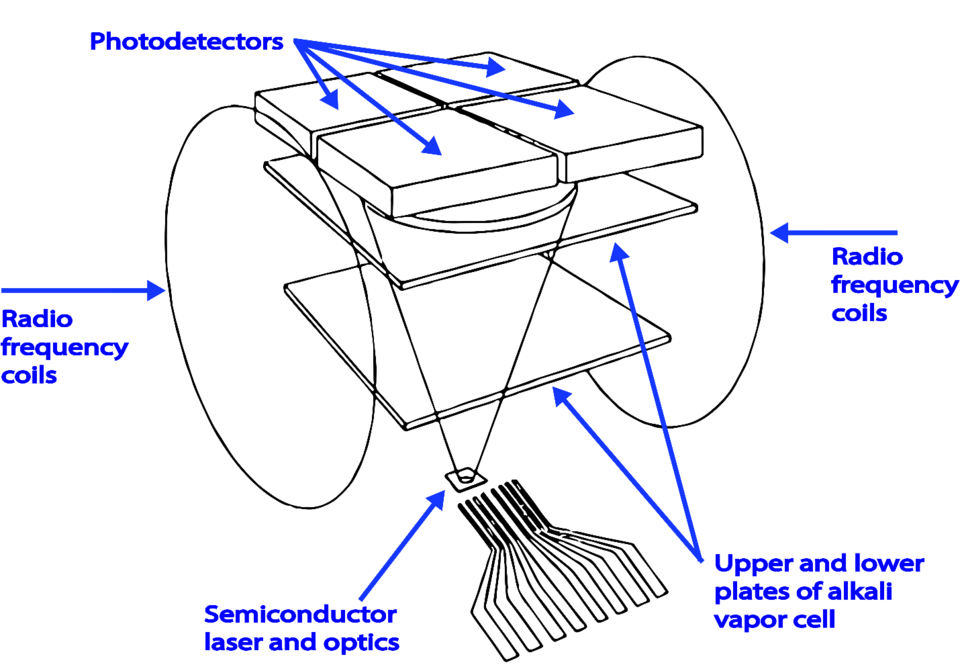Problem

Schematic of magnetometer/gyroscope. Laser light proceeds upward from its source and passes through a cell containing a vapor of alkali atoms. Magnetic fields affect the properties of the light, which are sensed by photodetectors.
As of the patent's date, a variety of vapor cell magnetometers and gyroscopes existed. They were expensive, and for some uses, the signal strength and data acquisition speed needed to be increased to enable increased sensitivity measurements. In addition, a smaller design was needed for use in compact systems that could be used in the field.
Invention
The NIST Compact Atomic Magnetometer is based on a diverging (or converging) beam of light that passes through an alkali atom vapor cell and that contains a distribution of beam propagation vectors. The existence of more than one propagation direction permits longitudinal optical pumping of the atomic system and simultaneous detection of the transverse atomic polarization. This design can be implemented with a micro-machined alkali vapor cell and light from a single semiconductor laser. A small modification to the cell contents and excitation geometry allows for use as a gyroscope. Atomic magnetometers are scalar sensors - they sense the magnitude of the magnetic field, rather than the projection along one spatial direction. This is particularly important for applications on moving platforms since platform motion adds considerable noise to a vector sensor as the angle between the field and the sensor axis changes.
Potential Commercial Applications
- Multiple addressable markets exist based on the combined performance of the magnetometer and gyroscope in inertial navigation systems (INS), as well as multiple end-use applications, including manned aircraft, automotive, and autonomous vehicles. NIST is seeking partnerships via CRADAs and patent license agreements.
- Gyroscope applications include inertial navigation and platform stabilization (anti-roll systems in cars, for example). Other applications include those requiring ultra precise navigation with extreme size, weight, and power limits, such as on spacecraft or submarines.
Competitive Advantage
Gyroscopes sense rotation. In combination with magnetometers, gyroscopes are used in inertial navigation and platform stabilization applications. The NIST Compact Atomic Magnetometer and Gyroscope is the first to demonstrate simultaneous measurement of rotation, rotation angle, and acceleration with a single source of atoms.
This technology simultaneously achieves high sensitivity, simple fabrication, and small size. For example, the NIST gyroscope’s sensitivities for the magnitude and direction of the rotation measurements are 0.033 degrees per second and 0.27 degrees with a one-second averaging time, respectively. A variety of magnetometer/ gyroscope combinations exist, but they are expensive.
The NIST compact atomic gyroscope enables multitasking measurement capabilities. It simultaneously measures rotation, rotation angle and acceleration with a single source of atoms. Signal strength and data acquisition speed increased to increase sensitivity measurements. In addition, it features a smaller design for compact systems that can be used in the field.
- Gyroscope capability
- High sensitivity
- Simple fabrication
- Small size
- Multitasking measurement capabilities
- Measures rotation, rotation angle, and acceleration with a single source of atoms

